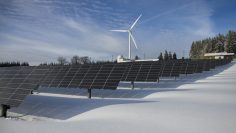
How to Get a Greener, Healthier Lawn
An attractive lawn can majorly impact your home’s curb appeal. The secret to maintaining yours may not be as elaborate and time consuming as you may think. When it comes to your lawn, the secret often boils down to timing and preemptive preparation.
Soil condition
Lawns grow best in soils that have a composition of clay, sand and silt. Improve your soil by adding compost, manure or grass clippings. Organic matter helps to lighten soil that is clay heavy and aids it in the retention of water and nutrients. You also want your soil to be loose and pliable, allowing the grass roots space to grow. If you find the earth is heavy and compacted, (or clay heavy), you may need to aerate.
Aerating
The process of aerating entails removing plugs of soil so air, fertilizer and water can penetrate the earth thoroughly, breaking down the toughness of the soil so roots can grow. When it comes to aeration, timing is critical. Your best bet is fall, when there are fewer weed seeds.
Fertilizing
Our lawns require more nitrogen, phosphorus, and potassium than they naturally contain, which is why fertilizing annually is recommended. Just as important as how often you fertilize, is at what rate you release the fertilizer into your lawn. Dumping too much fertilizer onto your lawn at once can end up doing your lawn more harm in the long run. You want to feed the fertilizer into your grass slowly and sparingly.
Mowing
When mowing, you want to aim to take off approximately one-third of the length of the blade. This is called mowing high. Mowing high ensures that the blade remaining has more leaf surface with which to absorb sunlight, and will encourage a thicker lawn to grow. This length will retain moisture better and choke out future weeds. Mow often, and with a sharp blade, because grass adjusts better to regular mowing.
Watering.
Rather than watering frequently, water strategically. You want to water only when the lawn visibly needs it, (when you see the grass is beginning to wilt and dull in colour). Water slowly and deeply, allowing time for the roots to absorb, taking into account evaporation. Because some of the water will inevitably evaporate, the best time of day to water is early morning when the sun is less severe. You want to give your lawn time to fully absorb the water and dry before nighttime.










